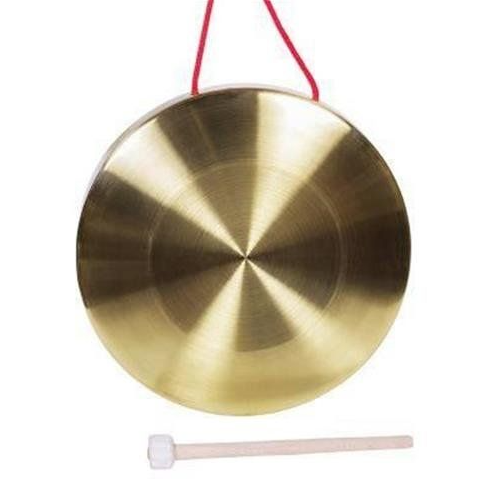Classification of gongs
790 views · Organized by 苏肆 on 2022-02-18
The big gong often cooperates with other percussion instruments, but it plays the most important role. Common gongs are divided into bass gongs, Korean gongs and welcoming gongs.
1. Bass gong
The bass gong is a big gong used in Beijing opera, and it is divided into Su gong and Feng gong. Su Gong, also known as light gong and low-pitched gong, is called Su-yin (deep and long bass) because of its sound. Feng Gong, also known as high-pitched Jing Gong, is named after it was first built in the old Fengtian Province, and it is called Da Gong in the northeast area.2. Korean gong
The Korean gong is a Korean percussion instrument. It is popular in Liaoning, Jilin, Heilongjiang and other provinces, especially in Yanbian Korean Autonomous Prefecture of Jilin Province.The big gong is made of bronze. The surface of the gong is flat and has no umbilical cord. The near side is sloping. The edge of the gong is narrow and converges to the back. Hole tether.

3. Welcome gong
In Daluo Village, Nanping Township, Lichuan City, there is a legend of the "Nine Hammers Welcome Gong" that has been passed down from the end of the Ming Dynasty to today. This big gong is a national treasure passed down from generation to generation by the Li family of "Dushuwan" in Daluo Village, Nanping Township. It is about 1 meter in diameter and has a pure and strong sound quality, which is quite different from the sound quality of ordinary big gongs. It was made in the late Ming and early Qing dynasties. According to reports, since the ancestors of the "Dushuwan" Li family settled in Lichuan during the Shunzhi period, four people have to carry the ancestral gong to clear the way for every family to marry a daughter-in-law. It was passed on to the descendants of the thirteenth generation of the Li family.Involving musical instruments
The big gong (pinyin: dà luó) is a kind of gong, and it is called the big gong because of its large face. It is made of copper, about 30 centimeters in diameter, flat and round, with sides, with smaller side holes and tied with ropes. When playing, the left hand is holding the gong and the right hand is holding the mallet.
Guess you like
Organized by 桑白 on 2022-03-14
Taiyuan gongs and drums originated in Jinyuan and have a history of thousands of years. They were selected into the third batch of national intangible cultural heritage lists. Taiyuan gongs and drums are famous at home and abroad for their excellent cymbal skills.
read >>
Organized by 青鸟 on 2022-03-14
"Old Tang Book Music Records" (Volume 29) said in the entry "Tongba": "Tongba, also known as copper plate, came from Xixu and Nanman." The copper plate mentioned in this record is about " The earliest record of the gong.
read >>
 渝公网安备 50010702504639号
渝公网安备 50010702504639号